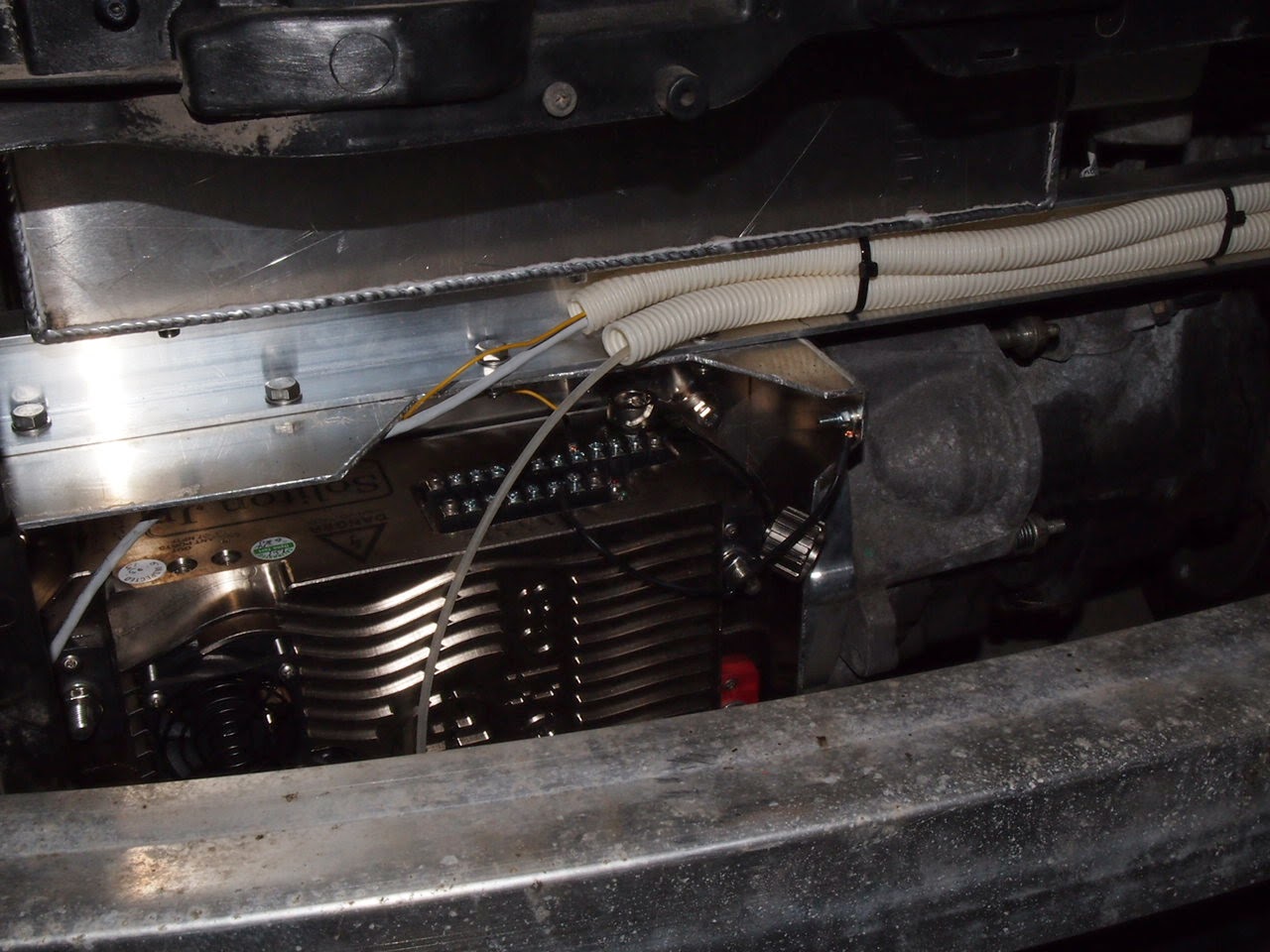This weekend I was mostly scratching my head trying to figure out where to mount everything. There is not a lot of space in the tiny engine compartment of the Audi A2.
Anyway, I manage to squeeze in the box with the SSRs for the heating. It mounts on the front battery box, just next to the main brake cylinder. The original lid for the box will not fit so I will have to make a narrower lid from a piece of plastic. The SSRs are mouted on heatsinks that are glued to the connection box. It is the heatsinks that are bolted to the battery box so in fact the connection box is mounted to the SSRs and not the other way around.
The box with the heater SSRs just below the brake cylinder
Closeup of the SSRs
The Meanwell DC/DC doesn't have any real mount points so I fabricated a mount by gluing on aluminum angle bars which will be bolted to the front of the battery box. I managed to glue it to the wrong side first but I realized that before the glue was dry ;)
According to its specs the glu has a shear strength of 12 N/mm2 so this mount, which is about 4 000 mm2, should withstand 48 kN. Since the DC/DC weighs about 3 kg, the mount will stand for 16 000 m/s2 or 1 600 g. I think it will hold!
Glue residue on top of the DC/DC
The stock Audi A2 150A battery fuse fits perfectly on the Meanwell.
The 150A fuse the used to be mounted directly on the 12V battery
I mounted some protective tubes for the cables to the motor controller. The top tube contains the brake lights cable (that turns the motor off if the brake pedal is pressed) and the ethernet cable to the controller. The bottom tube is yet to be filled with lots of stuff. I have ordered shielded cables to use for the throttle and tachometer so they won't. pick up noice from the controller.
The Soliton motor controller monted below the battery box and in front of the motor
I test mounted the front to see how much (little) space there is. There is some space to the right of the controller, in front of the transmission. There the charger will go. Note the red Sigg bottle to the left which is the vacuum container for the brake booster.







































